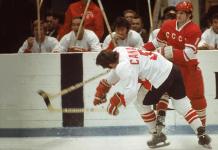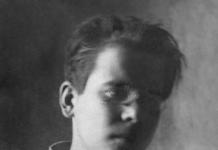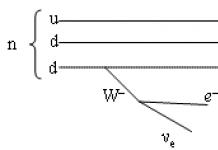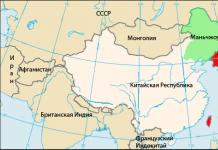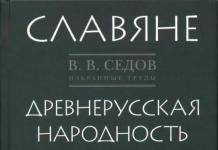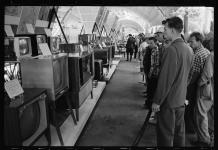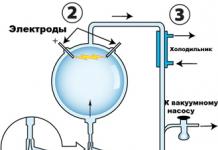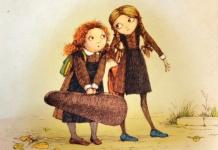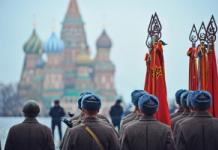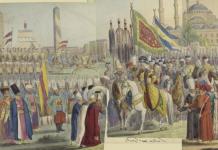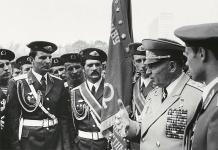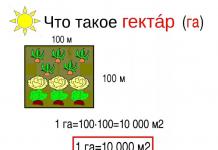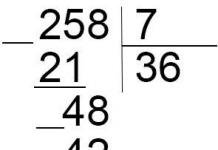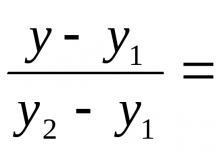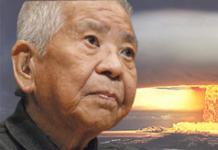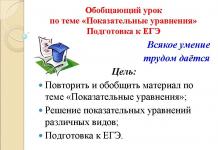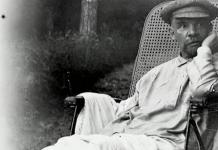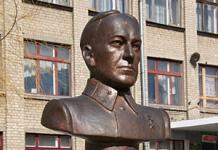Russian Emperor Pavel I Petrovich - born: October 1, 1754 died: March 24, 1801 From the Romanov dynasty, son of Catherine II and Peter III.
Childhood of Paul 1
Pavel was born under rather mysterious circumstances. Emperor Peter III and Catherine II did not have an heir for 10 years. This was explained quite simply: Peter was a chronic alcoholic. And yet the empress managed to get pregnant. Many did not consider Peter III to be the father of the baby, but they preferred to keep quiet about this.
The long-awaited child that was born did not become happiness for the parents. The emperor suspected that the child was not from him, but the mother treated the appearance of the boy, rather, as a "state project". The whole horror of the saying: "The seven nannies have a child without an eye" Paul experienced on himself. They often forgot to feed him, they dropped him repeatedly, he was left alone for a long time. He hadn't seen his parents for years! The boy grew up shy, withdrawn and deeply unhappy ...
Paul I - Away from the throne
1762 - Peter III was overthrown, and for 34 long years the Russian throne was occupied by his wife Catherine II. Catherine treated her son rather coldly: first of all, he was the direct heir to the throne, and she was not going to share power with anyone.
1772, September 20 - Paul turned 18 - it's time to take the throne. But from his mother he received only the rank of admiral-general of the Russian fleet and colonel of the cuirassier regiment. For the young prince, this was the first serious humiliation, followed by others: he was not awarded a seat either in the Senate or in the Imperial Council. On April 21, on her birthday, Catherine gave the Tsarevich a cheap watch, and her favorite Count Potemkin, an expensive one, for 50,000 rubles. And this is in front of the whole yard!
Paul 1 - between two worlds
In order for the prince to think less about power, the empress decided to marry him. The choice was stopped at the Prussian princess Wilhelmina. 1773, autumn - the young got married. Expectations did not come true, the marriage did not bring Paul happiness. His wife, as it turned out, was a powerful woman - she actually subdued her husband and began to cheat on him. This did not last long - after 3 years, Wilhelmina died in childbirth. Catherine consoled the heartbroken tsarevich in a peculiar way: she personally conveyed to Paul the love correspondence of the princess with Razumovsky, a close friend of the tsarevich. After the double betrayal, Paul became an even darker and more closed person.
Pavel did not remain single for long, and in the same 1776 he went to Berlin to meet the 17-year-old princess Sophia-Dorothea. Prussia made a strong impression on Paul: unlike Russia, the Germans reigned order and exemplary morality. Paul's respect for a foreign country quickly grew into sympathy for the bride; the princess reciprocated. 1776, October - the wedding took place. In Russia, Sophia-Dorothea received the name Maria Fedorovna.
For many years, Paul lived in two worlds - enjoying happiness in his private life, and in his public life he suffered from universal contempt. If Europe had long revered him as a full-fledged emperor, then in Russia the courtiers looked at him with a grin - the country was ruled by Catherine II with her lover Count Potemkin.
When Paul's sons began to grow up, Catherine personally began to educate them, demonstrating that she would allow one of her grandchildren to ascend the throne rather than her son. Paul's patience was still not unlimited ... 1783, May 12 - a final disagreement occurred between the Empress and Paul. In the same year, in August, his mother presented Pavel with an estate near St. Petersburg. It said only one thing - voluntary exile.
Paul 1 - exile
The donated estate became for Paul both a place of secret exile and an island of long-awaited freedom.
The first thing Pavel did was to defend the right to have three personal battalions of 2,399 people in Gatchina. They lived and served according to Prussian laws; the daily teachings were conducted by the prince himself.
Having inflicted a blow on the soldiers, Paul went to oversee numerous construction projects. In Gatchina, under his leadership, a hospital, a school, factories specializing in the production of porcelain and glass, 4 churches (Orthodox, Lutheran, Catholic and Finnish), as well as a library were built. There were 36,000 volumes in its funds.
The prince forgot his harshness and unsociability only in the evenings with his loved ones. He spent all the evenings with his wife Maria Fedorovna. Dinner was modest - a glass of burgundy claret and sausage with cabbage. It seemed that all his life he would be content with this measured and calm life.
Paul I - reforms
The death of Catherine II was sudden - November 6, 1796 from a stroke. If Catherine had lived for more than six months, Alexander would have ascended the throne. All papers with an order on his inheritance were prepared.
Unexpected power became for Paul 1 not only a long-awaited gift, but also a real curse: the country was in a terrible state. The ruble was depreciating, corruption and theft flourished everywhere, about 12,000 unsolved cases accumulated in the Senate. Three-quarters of the Russian army's officer corps existed only on paper. Many received ranks without even serving, desertion became the norm, and the fleet was still equipped with guns of the times.
The emperor began to fight hard against the lawlessness and decay of morals. Arrests, trials and exile swept across the country. Neither connections nor past merits could save from punishment of high officials. The officers also had a hard time: revels and trips to balls were forbidden by Pavel, and they were replaced by early wakes and exhausting teachings. Ordinary officials also expressed dissatisfaction with Pavlov's reforms - by five in the morning they should have been at the service.
Paul 1 was in power for only 4 years and 4 months. During this time, 7 marshals and more than 300 senior officers were demoted to him, he distributed 600,000 peasants to the landowners and issued 2,179 laws.
Despite the tough temper of the emperor, his eldest son Alexander was always on the side of his father. However, Paul 1 managed to lose this ally as well. Somehow, in front of everyone, he called the prince a fool, and this turned the heir against himself.
Bloody night
Paul 1 had a presentiment of his death. At least this is evidenced by many of the memoirs of his contemporaries.
SM Golitsyn wrote about the last evening: “It was established that at the end of the supper everyone would go out into another room and say goodbye to the emperor. That evening he did not say goodbye to anyone and said only: "What will be, that will not escape."
Another eyewitness wrote: “After supper, the emperor looked at himself in the mirror, which had a flaw and made faces crooked. He laughed at this saying, “Look what a funny mirror; I see myself in it, with my neck to one side. " It was an hour and a half before his death ... ".
... The last meeting of the conspirators took place on the night of March 12, 1801. General Bennigsen, the Zubov princes, and also Count Palen were in charge. Dissatisfaction with the policy pursued by Paul 1 passed over champagne and wine. Having invigorated themselves with drinks, the conspirators went to the chambers of Paul 1.
After passing two sentries, the men rushed to the emperor. Zubov made an offer to Paul 1 to sign an act of abdication. The emperor's refusal infuriated the uninvited visitors. According to one version, the emperor was strangled with a pillow, and then his body was cut with sabers.
Even before dawn, news spread around the northern capital that the emperor had suddenly died of an “apoplectic stroke,” and Alexander ascended the throne. Stormy fun began in St. Petersburg ...
A few years later, General Ya. I. Sanglen, the head of the secret police under Alexander 1, wrote: “Pavel will forever remain a psychological problem. With a kind, sensitive heart, an exalted soul, an enlightened mind, a fiery love of justice ... he was an object of horror for his subjects. " The nature of Paul 1 was never fully understood either by his contemporaries or by descendant historians.
After death Catherine 2 her son ascended the throne Paul 1... During his lifetime, Catherine actually removed Paul from power, their relationship was very cool.In 1794, she tried to deprive him of his right to inherit the throne and transfer power to her grandson. However, the empress could not carry out her intention.
After becoming emperor, Paul changed the order that existed at the court of Catherine. His policies in all areas were extremely inconsistent. He restored the abolished colleges, changed the administrative division of Russia, reduced the number of provinces, and returned the previous forms of government to the provinces of Russia. Pavel deprived the nobility of privileges, limited the validity of letters of gratitude, and constrained local self-government. In 1797, he established the peasant labor standard (three days of corvee per week), this was the first limitation of landlord power. However, for 4 years of reign, he distributed over 600 thousand peasants belonging to the state to the landowners.
In all his activities, Paul 1 admitted to extremes and pursued inappropriate policies. He banned the words "club", "council", "fatherland", "citizen". Forbidden waltz, individual details of clothing. He pardoned prisoners for political reasons arrested under Catherine II, but at the same time continued to fight against revolutionary manifestations in society. In 1797-1799. he instituted the most severe censorship, banning 639 editions. On July 5, 1800, many printing houses were sealed for censorship. Paul intervened in the affairs of religion, trying to introduce elements of Catholicism into Orthodoxy.
The emperor overturned the law prohibiting the purchase of peasants to work in factories. Without any justification, contrary to the meaning, he restored the collegial system, abolished by Catherine II.
Among the innovations introduced by the emperor, the creation of the Medical and Surgical Academy, the Russian-American company, and a school for military orphans stand out positively.
The Emperor attached great importance to regulations in military relations. Mushtra in the army acquired unprecedented proportions, which caused discontent among the guards and among the senior officers.
In 1798, an anti-French coalition was formed, which included England, Austria, Turkey and Russia. The Black Sea squadron under the command of F.F. Ushakov. The Russian fleet liberated the Ionian Islands and Southern Italy from the French occupation. In February 1799, a major battle took place for the island of Corfu, where the three thousandth French garrison was defeated. Russian troops entered Naples and Rome.
In 1799 Russia began the land phase of the war. At the insistence of the allies, the command of the troops was entrusted to A.V. Suvorov... For a month and a half of hostilities, Russian troops managed to oust the French from Northern Italy. Fearing the growing influence of Russia in Italy, Austria achieved the transfer of Suvorov's troops to Switzerland. August 31, 1799 to provide assistance to the troops of General A.M. Rimsky-Korsakov, Suvorov makes a heroic transition from Northern Italy through the Alps to Switzerland. Russian troops in the battles of St. Gotthard and Devil's Bridge overpowered the enemy. But help was late, and the troops of Rimsky-Korsakov were defeated.
In 1800 Paul 1 makes a sharp turn in foreign policy. He ceases hostilities, withdraws troops to Russia and breaks the alliance with England and Austria. Having concluded peace with France, Paul 1 entered into an alliance with Prussia against Austria and with Prussia, Switzerland and Denmark against England. The aggravation of relations with England caused discontent among the nobility, since England was the main partner of Russia in trade and the purchase of grain.
But palace coup on the night of March 11-12, 1801, he interrupted plans for a war against England. Paul 1 was killed as a result of this coup, organized by the senior guards officers, who did not forgive him the oppression and the will taken from them.
Potemkin Grigory Alexandrovich was born in the village. Chizhovo in the Smolensk region (Russia) in a noble family. In 1762, G.A. Potemkin, while serving in the guard, participated in a palace coup, as a result of which Catherine II received the Russian throne. Potemkin G.A. - participant in the Russian-Turkish war of 1768-1774. Becoming the favorite of Catherine II in 1774, he gained a decisive influence on state affairs. With his participation, the peasant war led by E. Pugachev was suppressed. In 1775, at the initiative of G.A. Potemkin, the New Sich was liquidated. In 1776 Potemkin G.A. appointed Governor-General of Novorossiysk, Azov and Astrakhan. For the annexation of Crimea to Russia in 1783, he received the title of "Prince of Tauride". G.A. Potemkin contributed to the development of the Black Sea region. According to the decree of Catherine II addressed to G.A. Potemkin Kherson was founded on June 18, 1778. For the first time G.A. Potemkin arrived in Kherson in May 1780 with considerable funds for the construction and improvement of the city. He summoned from Russia 2,000 craftsmen, carpenters, blacksmiths and masons for ship and urban construction, transferred 10 infantry regiments from his fourth division to Kherson to build a fortress and a settlement in the city. Potemkin G.A. visited Kherson in 1782 and 1783, and from 1786 until the end of his life he visited the city regularly, carefully following its development. Talented engineers and architects from St. Petersburg and Moscow, France, Holland and Germany worked in Kherson. The free trade right granted to Kherson facilitated the opening of foreign trade offices in the city. During the management of G.A. Potemkin Novorossiya was the settlement of the region. New villages, cities, foreign colonies arose. Kherson, Sevastopol, Nikolaev, Yekaterinoslavl (Dnepropetrovsk) were built under his leadership. G.A. Potemkin carried out a number of measures to reorganize the Russian army and organize the Black Sea Fleet. During the Russian-Turkish war of 1787-1791. Potemkin G.A. - Commander-in-Chief of the Russian Army. During the peace negotiations with Turkey, he fell ill and died on the way from Iasi (Moldova) to Nikolaev. Many plans of Potemkin G.A. regarding Kherson remained unfulfilled. He was buried by order of Catherine II in the Catherine Cathedral of Kherson, where his remains are kept in the crypt to this day. Two islands on the Dnieper near Kherson are named Potemkinsky - Big and Small. In the Kherson city park named after him, there is a monument to "Prince Tavrichesky", one of the city's schools bears his name.
Peter Alexandrovich Rumyantsev was one of the outstanding Russian commanders. His successes in the wars with Prussia and Turkey marked the beginning of the glory of Russian weapons in Europe. He gave rise to the future successes of Suvorov and Ushakov. 
In August 1756, the Seven Years' War began in Europe. On one side were the participants of the Whitehall Treaty of England and Prussia, on the other side the participants of the Triple Alliance Russia, Austria and France. On August 19, 1757, the first battle of the Russian army with the Prussian troops took place.
The losses of the Russians were enormous; vanity and confusion began. The outcome of the battle was decided by Rumyantsev, who, without an order from the commander-in-chief, under artillery fire, rebuilt the infantry and led it through the forest to the rear of the enemy. The Prussian army did not expect such a turn of events, and was swept away by Russian soldiers.
Peter Alexandrovich was entrusted with command of the cavalry corps. In a war situation, he had to study new sciences for himself, establish order and discipline, and solve economic problems. He coped well with all the difficulties, and he was awarded the rank of lieutenant general.
In the seven years' war he showed himself from the best side. The cavalry detachment under his leadership fearlessly went on the attack and mercilessly stabbed the enemy. For his successes at the front, he was awarded the Order of St. Alexander Nevsky, and received a monetary gift from the Austrian Archduchess Maria Terezin. And for the capture of the Kolberg fortress in December 1761, he was worthy of the rank of general-in-chief.
After the war, by order of Catherine II, he took up the affairs of the army. He formed new principles of warfare. Made the army more mobile and flexible. On September 25, 1768, the war with the Ottoman Empire began. A year after its beginning, Rumyantsev takes command of the first army, which will have to fight in Moldova and Wallachia.
The first victory in this company was won by the voivode over the enemy in June 1770, over the united army of Turks and Crimean Tatars, which was twice outnumbered. A little later, between the rivers Largo and Bibikul, Russian troops found the enemy and defeated him. The Turks fled, leaving 33 guns on the battlefield. On July 21, the Kagul battle took place. The Russian army defeated the selected detachments of the Turks, which outnumbered them.
The battle of Kagul greatly changed the course of the war. Practical Russians occupied Turkish fortresses without firing a single shot.
Catherine II honorably awarded the winner. Pyotr Aleksandrovich Rumyantsev has now become honorably called Zadunaiskiy. The commander received a cross and a star of the Order of St. Andrew the First-Called, a village in Belarus, and a monetary award. He lived for another 20 years, but after the war with the Turks, he no longer participated in military campaigns.
Alexander Vasilievich Suvorov(1730 - 1800) - great commander, prince of Italy, count of Rymnik, generalissimo, field marshal general. Holder of all Russian military orders of that time, as well as many foreign awards. 
Early years
The date and place of birth of Alexander Suvorov is not known for certain, but many scientists believe that he was born on November 13 (24), 1730 in Moscow in the family of a general. Got my name after Prince Alexander Nevsky... He spent his childhood in the village, on his father's estate.
Since childhood, the military family has left its mark on the fate of Suvorov. Despite the fact that Alexander was a weak and often ill child, he wanted to become a military man. Suvorov began to study military affairs, strengthened his physical fitness. In 1742 he went to serve in the Semenovsky regiment, where he spent 6.5 years. At the same time, he studied at the Land Cadet Corps, studied foreign languages, and was engaged in self-education. General Abram Hannibal, who was a friend of the Suvorov family and great-grandfather, paid great attention to the further fate of Suvorov. Alexandra Pushkin.
A short biography of Suvorov for children and students of different grades is a small, but meaningful and interesting story about his exploits and services to his homeland.
The beginning of a military career
During the Seven Years' War (1756-1763) he was in the military rear (major, prime-major), then was transferred to the active army. The first military actions, in which Suvorov took part, took place in July 1759 (he attacked German dragoons). Then Suvorov served as an officer on duty at the commander-in-chief, in 1762 he received the rank of colonel, commanded the Astrakhan and Suzdal regiments.
Military campaigns
In 1769 - 1772, during the war with the Bar Confederation, Suvorov commanded brigades of several regiments. In January 1770, Suvorov was awarded the rank of major general. He won several battles against the Poles, received his first award - the Order of St. Anne (1770). And in 1772 he was awarded the most honorable military order of St. George of the third degree. The Polish company ended in victory for the Russians, largely due to the actions of Suvorov.
During the Russian-Turkish war, he decided to seize the garrison, for which he was convicted and later pardoned by Catherine II. Then Suvorov defended Girsovo, took part in the battle at Kozludzha. After that, in the biography of Alexander Suvorov, there is a hunt for Emelyan Pugachev, whose uprising had already been suppressed by that time.
In September 1786 he was promoted to general-in-chief. During the second Russian-Turkish war (1787-1792), the commander Suvorov took part in the Battle of Kinbur, Fokshan, Izmail, and the Battle of Rymnik. During the Polish uprising of 1794, Suvorov's troops stormed Prague. Under Paul I, the commander set out on the Italian campaign in 1799, then on the Swiss campaign.
In January 1800, by order of Paul I, Suvorov returned to Russia with his army. On the way home, he fell ill, and on May 6 (18), 1800, Alexander Vasilyevich Suvorov died in St. Petersburg. The great commander was buried in the Annunciation Church of the Alexander Nevsky Lavra.
Fedor Fedorovich Ushakov was born into a noble family. The family did not live well. At the age of 16, Fyodor Ushakov entered the Marine Corps in St. Petersburg. At this time, Catherine II was sitting on the Russian throne. Russia was preparing for a war with Turkey, so the country needed to create a powerful fleet in the Azov and Black Seas. 
The construction of the fleet was entrusted to Vice - Admiral Senyavin, who in the early spring of 1769 began to create a naval base in Taganrog. Ushakov arrived at Senyavin's location among the officers on duty.
In the spring of 1773, the Russian fleet began to dominate the Sea of Azov. After the final defeat of the Turks in the Sea of Azov, the fighting moved on to the Black Sea. The fleet inflicted sensitive blows on the Turks, and the position of the Russian army in the war with the Turks improved significantly.
After four years of war, Ushakov began to command the messenger bot "Courier". Subsequently, he became the commander of a large 16 cannon ship. In the final part of the Russian - Turkish war, he took part in the defense of the Russian military base on the Crimean coast - Balakva.
In the second Russian-Turkish war, during a major battle on the Black Sea in 1788, he brilliantly showed himself in the position of chief of the vanguard. The Battle of Fidonisia ended with the defeat of the Turkish fleet. Many well-known military leaders highly appreciated Fyodor Fedorovich.
A year later he became Rear Admiral, and in 1790 became Commander of the Black Sea Fleet of the Russian Empire. The Turks launched large-scale hostilities and planned to land a large landing of troops in the Crimea. These plans, thanks to the skillful actions of the fleet under the leadership of Fyodor Ushakov, were not destined to come true.
On July 8, 1790, the Battle of Kerch took place, where the Russian fleet won and secured the Crimea from the Turkish landing. In August 1791, a major naval battle took place at Cape Kaliariya. The Russian fleet was losing in numbers, but thanks to the effect of surprise, Ushakov managed to put the Turks to flight.
In 1793 Fyodor Ushakov received the next military rank of vice-admiral. In 1798 he successfully led the Mediterranean campaign. He was faced with a difficult task: the liberation of the Ionian Islands from the French. The voivode brilliantly coped with this task in a short time, capturing the necessary islands. In 1799 he returned to his homeland. A year later he left for Sevastopol, a little later became the commander of the Baltic rowing fleet. In 1807 he retired. He died in 1817.
Fyodor Fyodorovich was a contemporary of Suvorov. Ushakov is a fearless, courageous, talented Russian naval commander who laid down his life for the glory of Russian weapons. He is the pride and glory of the Russian fleet and army. Fyodor Ushakov was directly involved in the construction of the Russian Black Sea fleet. He is one of the creators of Russia's success in the fight against Turkey. Under his command, the Russian fleet entered the Mediterranean for the first time, where it conducted a series of successful operations with Russia's allies.
Nikolay Novikov(1744 - 1818). Coming from a family of a petty nobleman, Novikov studies at Moscow University, and then enters the Izmailovsky Guards regiment, which participates in the coup 1762 years
... In 1767 he worked at the Commission for the preparation of a new Code. Having received the rank of lieutenant, he goes to the first Russian-Turkish war, but soon after the outbreak of hostilities, he resigns and decides to devote himself entirely to literary and journalistic work. In 1769 he began to publish the journal "Drone", in which he criticized high society, court life with its addiction to everything French, and castigated serf manners. The magazine was soon banned, but Novikov did not despair with 1772 year
publishes a new magazine "Painter", which is suffering the same fate; two years later the same thing is repeated with the magazine "Purse". Then Novikov undertook the release of a series of his works on history and various fields of knowledge. With approval Catherine II
, which gave him access to the archives, he publishes ancient chronicles in his "Ancient Russian vivliofics". He is responsible for the compilation of the "Dictionary of Russian Writers Experience". He entered the first purely Russian Masonic lodge immediately upon its foundation in 1781. Thanks to his Masonic connections, he first received the printing house of Moscow University for rent, and in 1784 year
creates "Printing company" in Moscow. In addition, he founds a pedagogical seminary at the university, which trains teachers and exists at the expense of Masonic lodges. With the beginning of the policy of reaction, he was arrested in 1792 year
and imprisoned in the Shlisselburg fortress. Released by Paul 1 in 1796, but broken by torture chambers, he withdraws from public life and plunges into mystical Rosicrucian meditations. He dies in 1818. 
Alexander Nikolaevich Radishchev(1749 - 1802) - writer, poet, philosopher. 
At the beginning of his biography, Radishchev lived in Nemtsov, after which he moved to the village of Verkhnee Ablyazovo. Ever since childhood, the conversations of the serfs revived in him hatred of the landowners, pity for the people. He received his first education at home: he was brought up by servants, studied the Psalter.
Then he moved to Moscow, where he settled with Armagakov, who serves as the director of Moscow University. It was then that in the life of Radishchev the foundations of the philosophy of enlightenment were learned. Alexander studied at the gymnasium, went to the St. Petersburg Corps of Pages. After 4 years of study there he went to Leipzig.
In 1771, in the biography of Alexander Radishchev, there was a return to St. Petersburg. Having received the title of counselor, he began to serve in the Senate. In 1789, the first work of Radishchev was published. Having started a printing house, the writer published Journey from St. Petersburg to Moscow. For Radishchev, the work of that period was a way to condemn the serf system of the state. Undoubtedly, this provoked a protest from the empress, so that the writer was soon arrested.
After the death sentence was commuted to exile to Siberia for 10 years. Even there, Radishchev's stories are written. However, Emperor Paul I returned the writer from exile, and Alexander I granted him complete freedom.
Then, in the biography of Radishchev, he was given the position of a member of the commission for drawing up laws. In September 1802 he committed suicide.
The writer has made several translations of books. Radishchev's ode "Liberty" "was written in 1783, the work" Life of FV Ushakov "- in 1788. The Radishchev Museum is located in Saratov.
Alexander 1 king, who ruled Russia from 1801 to 1825, the grandson of Catherine 2 and the son of Paul 1 and Princess Maria Fedorovna, was born on December 23, 1777. Catherine 2 had a serious influence on the personality of Alexander I. In an effort to raise a good sovereign, she insisted that the boy live with her. However, the future emperor Alexander 1, after the death of Catherine and Paul's accession to the throne, entered into a conspiracy against his own father, since he was not happy with the new reign. Paul was killed on March 11, 1801. As they say, despite the protests of the son. It was originally planned that the internal policy of Alexander 1 and foreign policy would develop in accordance with the course outlined by Catherine 2. In the summer of June 24, 1801, an unspoken committee was created under Alexander 1. It included the companions of the young emperor. In fact, the council was the highest (unofficial) advisory body in Russia. 
The beginning of the reign of the new emperor was marked by the liberal reforms of Alexander 1. The young ruler tried to give the country a constitution, to change the political system of the country. However, he had many opponents. This led to the creation of the Indispensable Committee on April 5, 1803, whose members had the right to challenge the royal decrees. But, nevertheless, some of the peasants were freed. The decree "On free farmers" was issued on February 20, 1803.
Training was also given serious importance. The education reform of Alexander I actually led to the creation of a state education system. It was headed by the Ministry of Public Education. Also, the State Council was formed under Alexander 1, which was opened with great solemnity on January 1, 1810.
Further, in the course of the reform of the state administration of Alexander 1, the collegiums that had actually ceased to function (established in the era of Peter 1) were replaced by ministries. In total, 8 ministries have been established: of the interior, finance, military and land forces, naval forces, commerce, public education, foreign affairs, and justice. The ministers who governed them were subordinate to the Senate. The ministerial reform of Alexander I was completed by the summer of 1811.
Speransky M.M. had a serious influence on the course of further reforms. He was entrusted with the development of state reform. According to the project of this outstanding figure, a constitutional monarchy was to be created in the country. The power of the sovereign was planned to be limited by the parliament (or a body of a similar type), consisting of 2 chambers. However, due to the fact that the foreign policy of Alexander I was quite difficult, and tensions in relations with France were constantly increasing, the reform plan proposed by Speransky was perceived as anti-state. Speransky himself received his resignation in March 1812.
1812 was the hardest year for Russia. But, the victory over Bonaparte significantly increased the authority of the emperor. It is worth noting that the peasant question under Alexander 1 was slowly, but nevertheless, tried to be resolved. A phased elimination of serfdom in the country was planned. By the end of 1820, a draft "State charter of the Russian Empire" was prepared. The Emperor approved it. But the commissioning of the project was impossible due to many factors.
In domestic politics, it is worth noting such features as military settlements under Alexander 1. They are better known under the name "Arakcheevskie". Arakcheev's settlements aroused the discontent of almost the entire population of the country. Also, a ban was introduced on any secret societies. It began operating in 1822. Liberal rule that Alexander dreamed of short biography which simply cannot contain all the facts, turned into tough police measures of the post-war period.
The death of Alexander 1 occurred on December 1, 1825. It was caused by typhoid fever. Emperor Alexander 1 left a rich and controversial legacy to descendants. This is the beginning of the resolution of the issue of serfdom, and the Arakcheevism, and the greatest victory over Napoleon. These are the results of the reign of Alexander 1.
Mikhail Mikhailovich Speransky(1772-1839) - Russian political and public figure, author of numerous theoretical works on jurisprudence and law, lawmaker and reformer. He worked during the reign of Alexander 1 and Nicholas 1, was a member of Imperial Academy sciences and was the educator of the heir to the throne, Alexander Nikolaevich. Major transformations in the Russian Empire and the idea of the first constitution are associated with Speransky's name. 
Pavel I Petrovich (1754-1801)
The ninth All-Russian Emperor Pavel I Petrovich (Romanov) was born on September 20 (October 1), 1754 in St. Petersburg. His father was Emperor Peter III (1728-1762), who was born in the German city of Kiel, and was named Karl Peter Ulrich Holstein-Gottorp at birth. By coincidence, Karl Peter simultaneously had the rights to two European thrones - Swedish and Russian, since, in addition to kinship with the Romanovs, the Holstein dukes were in direct dynastic connection with the Swedish royal house. Since the Russian empress Elizaveta Petrovna had no children of her own, in 1742 she invited her 14-year-old nephew Karl Peter to Russia, who was baptized into Orthodoxy under the name of Peter Fedorovich.
Having come to power in 1861 after the death of Elizabeth, Pyotr Fedorovich spent 6 months in the role of the All-Russian emperor. Peter III's activities characterize him as a serious reformer. He did not hide his Prussian sympathies and, after taking the throne, immediately put an end to Russia's participation in the Seven Years War and entered into an alliance against Denmark, the longtime offender of Holstein. Peter III liquidated the Secret Chancellery - a grim police institution that kept the whole of Russia at bay. In fact, no one canceled the denunciations, it was just that from now on they had to be submitted in writing. And then he took the land and peasants from the monasteries, which even Peter the Great could not do. However, the time allotted by history for the reforms of Peter III was not long. Only 6 months of his reign, of course, cannot be compared with the 34-year reign of his wife, Catherine the Great. As a result of a palace coup, Peter III was dethroned on June 16 (28), 1762 and killed in Ropsha near St. Petersburg 11 days after that. During this period, his son, the future Emperor Paul I, was not even eight years old. The wife of Peter III, who proclaimed herself Catherine II, came to power with the support of the Guards.
The mother of Paul I, the future Catherine the Great, was born on April 21, 1729 in Stettin (Szczecin) in the family of a general of the Prussian service and received a good education for that time. When she was 13 years old, Frederick II recommended her to Elizabeth Petrovna as a bride for Grand Duke Peter Fedorovich. And in 1744 the young Prussian princess Sophia-Friderica-Augusta-Anhalt-Zerbst was brought to Russia, where she received the Orthodox name of Ekaterina Alekseevna. The young girl was smart and ambitious, from the first days of her stay on Russian soil she diligently prepared to become a Grand Duchess, and then the wife of the Russian emperor. But the marriage with Peter III, concluded on August 21, 1745 in St. Petersburg, did not bring happiness to the spouses.
It is officially believed that Paul's father is Catherine's legal husband, Peter III, but her memoirs contain indications (however, indirect) that Paul's father was her lover Sergei Saltykov. This assumption is supported by the well-known fact of extreme hostility that Catherine always felt for her husband, and against the significant portrait likeness of Paul to Peter III, as well as the persistent hostility of Catherine and Paul. An examination of the DNA of the remains of the emperor, which has not yet been carried out, could completely discard this hypothesis.
On September 20, 1754, nine years after the wedding, Catherine gave birth to Grand Duke Pavel Petrovich. It was major event, after all, after Peter I, Russian emperors did not have children, confusion and turmoil reigned at the death of each ruler. It was under Peter III and Catherine that there was hope for the stability of the state structure. During the first period of her reign, Catherine was worried about the legitimacy of her power. After all, if Peter III was still half (by his mother) a Russian person and, moreover, was the grandson of Peter I himself, then Catherine was not even a distant relative of the legitimate heirs and was only the wife of the heir. Grand Duke Pavel Petrovich was the legitimate but unloved son of the empress. After the death of his father, he, as the only heir, was supposed to take the throne with the establishment of a regency, but this, at the behest of Catherine, did not happen.
Tsarevich Pavel Petrovich spent the first years of his life surrounded by nannies. Immediately after his birth, Empress Elizaveta Petrovna took him to her. In her notes, Catherine the Great wrote: "They had just swaddled him when, at the order of the empress, her confessor appeared and named the child Paul's name, after which the empress immediately ordered the midwife to take him and carry him, and I remained on the maternity bed." The whole empire rejoiced at the birth of the heir, but they forgot about his mother: "Lying in bed, I cried and groaned incessantly, there was one in the room."
Paul's baptism took place in a magnificent setting on September 25th. Empress Elizaveta Petrovna expressed her favor to the mother of the newborn by the fact that after the christening she herself brought her a decree to the cabinet on a gold platter on the issue of 100 thousand rubles to her. After the christening at the court, solemn holidays began - balls, masquerades, fireworks on the occasion of Paul's birth lasted for about a year. Lomonosov, in an ode written in honor of Pavel Petrovich, wanted him to compare with his great great-grandfather.
 Catherine had to see her son for the first time after giving birth only after 6 weeks, and then only in the spring of 1755. Ekaterina recalled: “He was lying in an extremely hot room, in flannel swaddling clothes, in a bed upholstered with black fox fur, they covered him with a quilted satin blanket, and on top of that, a pink velvet blanket ... sweat appeared on his face and all over his body When Paul grew up a little, the slightest breath of wind inflicted a cold on him and made him sick. In addition, many stupid old women and mothers were assigned to him, who, with their excessive and inappropriate zeal, caused him incomparably more physical and moral harm than good. " Improper care led to the fact that the child was distinguished by increased nervousness and impressionability. Even in early childhood, Pavel's nerves were upset to the point that he hid under the table when the doors slammed somewhat violently. There was no system in caring for him. He went to bed either very early, at about 8 pm, or in the first hour of the night. It happened that he was allowed to eat when "if he pleases," there were cases of simple negligence: "Once he fell out of the cradle, so no one heard it. rests soundly. "
Catherine had to see her son for the first time after giving birth only after 6 weeks, and then only in the spring of 1755. Ekaterina recalled: “He was lying in an extremely hot room, in flannel swaddling clothes, in a bed upholstered with black fox fur, they covered him with a quilted satin blanket, and on top of that, a pink velvet blanket ... sweat appeared on his face and all over his body When Paul grew up a little, the slightest breath of wind inflicted a cold on him and made him sick. In addition, many stupid old women and mothers were assigned to him, who, with their excessive and inappropriate zeal, caused him incomparably more physical and moral harm than good. " Improper care led to the fact that the child was distinguished by increased nervousness and impressionability. Even in early childhood, Pavel's nerves were upset to the point that he hid under the table when the doors slammed somewhat violently. There was no system in caring for him. He went to bed either very early, at about 8 pm, or in the first hour of the night. It happened that he was allowed to eat when "if he pleases," there were cases of simple negligence: "Once he fell out of the cradle, so no one heard it. rests soundly. "
Paul received an excellent education in the spirit of the French enlighteners. He knew foreign languages, possessed knowledge of mathematics, history, applied sciences. In 1758, Fedor Dmitrievich Bekhteev was appointed his tutor, who immediately began to teach the boy to read and write. In June 1760, Nikita Ivanovich Panin was appointed Chief Hofmeister under the Grand Duke Pavel Petrovich, Semyon Andreevich Poroshin, the former adjutant of Peter III, was the tutor and teacher of mathematics for Pavel, and Archimandrite Platon, Hieromonk Trinity Sergius Lavra, later Moscow Metropolitan.
On September 29, 1773, 19-year-old Pavel marries, having married the daughter of the Landgrave of Hesse-Darmstadt, Princess Augustine-Wilhelmina, who received the name of Natalia Alekseevna in Orthodoxy. Three years later, on April 16, 1776, at 5 o'clock in the morning, she died in childbirth, and the child died with her. The medical report, signed by doctors Kruse, Arsh, Bok and others, speaks of the difficult childbirth of Natalya Alekseevna, who suffered from a curvature of the back, and the "large child" was incorrectly positioned. Catherine, however, not wanting to waste time, begins a new matchmaking. This time, the queen chose the Württemberg princess Sophia-Dorothea-Augusta-Louise. A portrait of the princess is delivered by courier, which Catherine II offers to Paul, saying that she is "meek, pretty, lovely, in a word, a treasure." The heir to the throne falls more and more in love with the image, and in June he goes to Potsdam to match the princess.
Seeing the princess for the first time on July 11, 1776 in the palace of Frederick the Great, Paul writes to his mother: “I have found my bride as I could mentally wish: not ugly, large, slender, answers intelligently and promptly. As for her heart, then she has his very sensitive and gentle ... She loves to be at home and practice reading and music, greedy to study in Russian ... "Having met the princess, the Grand Duke fell passionately in love with her, and after parting, he wrote her tender letters from the road with a declaration of love and devotion.
In August, Sophia-Dorothea arrives in Russia and, following the instructions of Catherine II, on September 15 (26), 1776, she receives Orthodox baptism under the name of Maria Feodorovna. Soon the wedding took place, a few months later she writes: "My dear husband is an angel, I love him to madness." A year later, on December 12, 1777, the young couple had their first son, Alexander. On the occasion of the birth of the heir in St. Petersburg, 201 cannon shots were fired, and the sovereign grandmother Catherine II gave her son 362 dessiatines of land, which laid the foundation for the village of Pavlovskoye, where the palace-residence of Paul I was later built. 1778. The construction of the new palace, designed by Charles Cameron, was carried out mainly under the supervision of Maria Feodorovna.
 With Maria Fedorovna, Pavel found true family happiness. Unlike mother Catherine and great-aunt Elizabeth, who did not know family happiness, and whose personal life was far from generally accepted moral norms, Pavel appears as an exemplary family man who gave an example to all subsequent Russian emperors - their descendants. In September 1781, the grand ducal couple, under the name of the Count and Countess of the North, set off on a long journey across Europe, which lasted a whole year. During this trip, Pavel did more than just sightseeing and acquiring works of art for his palace under construction. The trip was also of great political importance. Having escaped from the care of Catherine II for the first time, the Grand Duke had the opportunity to personally meet the European monarchs and paid a visit to Pope Pius VI. In Italy, Paul, following in the footsteps of his great-grandfather, Emperor Peter the Great, is seriously interested in the achievements of European shipbuilding and gets acquainted with the organization of naval affairs abroad. During his stay in Livorno, the Tsarevich finds time to visit the Russian squadron located there. As a result of assimilating new trends in European culture and art, science and technology, style and way of life, Pavel largely changed his own worldview and perception of Russian reality.
With Maria Fedorovna, Pavel found true family happiness. Unlike mother Catherine and great-aunt Elizabeth, who did not know family happiness, and whose personal life was far from generally accepted moral norms, Pavel appears as an exemplary family man who gave an example to all subsequent Russian emperors - their descendants. In September 1781, the grand ducal couple, under the name of the Count and Countess of the North, set off on a long journey across Europe, which lasted a whole year. During this trip, Pavel did more than just sightseeing and acquiring works of art for his palace under construction. The trip was also of great political importance. Having escaped from the care of Catherine II for the first time, the Grand Duke had the opportunity to personally meet the European monarchs and paid a visit to Pope Pius VI. In Italy, Paul, following in the footsteps of his great-grandfather, Emperor Peter the Great, is seriously interested in the achievements of European shipbuilding and gets acquainted with the organization of naval affairs abroad. During his stay in Livorno, the Tsarevich finds time to visit the Russian squadron located there. As a result of assimilating new trends in European culture and art, science and technology, style and way of life, Pavel largely changed his own worldview and perception of Russian reality.
By this time, Pavel Petrovich and Maria Fedorovna already had two children after the birth of their son Konstantin on April 27, 1779. And on July 29, 1783, their daughter Alexandra was born, in connection with which Catherine II presented Pavel with the Gatchina manor, bought from Grigory Orlov. The number of Paul's children, meanwhile, is constantly increasing - on December 13, 1784, his daughter Elena was born, on February 4, 1786 - Maria, on May 10, 1788 - Catherine. Pavel's mother, Empress Catherine II, rejoicing for her grandchildren, wrote to her daughter-in-law on October 9, 1789: "Right, madam, you are a master of children to produce."
Catherine II personally took care of the upbringing of all the older children of Pavel Petrovich and Maria Feodorovna, in fact, taking them away from their parents and not even consulting them. It was the empress who invented the names for the children of Paul, naming Alexander in honor of the patron saint of St. Petersburg, Prince Alexander Nevsky, and she gave this name to Constantine because she intended her second grandson for the throne of the future Constantinople Empire, which was to be formed after the expulsion of the Turks from Europe. Catherine personally was looking for a bride for Paul's sons - Alexander and Constantine. And both of these marriages did not bring family happiness to anyone. Emperor Alexander only at the end of his life will find a devoted and understanding friend in his wife. And the Grand Duke Konstantin Pavlovich will violate the generally accepted norms and divorce his wife, who will leave Russia. As the governor of the Warsaw principality, he will fall in love with the beautiful Polish woman - Ioanna Grudzinskaya, Countess Lovich, in the name of preserving family happiness he will renounce the Russian throne and will never become Constantine I, the emperor of all Russia. In total, Pavel Petrovich and Maria Fedorovna had four sons - Alexander, Konstantin, Nikolai and Mikhail, and six daughters - Alexandra, Elena, Maria, Ekaterina, Olga and Anna, of whom only 3-year-old Olga died in infancy.
It would seem that Paul's family life was developing happily. A loving wife, many children. But the main thing that every heir to the throne aspires to was lacking - there was no power. Pavel patiently awaited the death of his unloved mother, but it seemed that the great empress, who had an imperious character and good health, was never going to die. In previous years, Catherine wrote more than once about how she would die surrounded by friends, to the sound of gentle music among flowers. The blow suddenly overtook her on November 5 (16), 1796 in a narrow passage between two rooms of the Winter Palace. She suffered a severe stroke, and several servants with difficulty managed to pull the heavy body of the empress out of the narrow corridor and put it on a mattress spread on the floor. Couriers rushed to Gatchina to inform Pavel Petrovich of the news of his mother's illness. The first was Count Nikolai Zubov. The next day, in the presence of her son, grandchildren and close courtiers, the empress died without regaining consciousness, at the age of 67, of which she spent 34 years on the Russian throne. Already on the night of November 7 (18), 1796, everyone was sworn in to the new emperor - 42-year-old Paul I.
By the time of accession to the throne, Pavel Petrovich was a man with established views and habits, with a ready-made, as it seemed to him, program of action. Back in 1783, he broke off all relations with his mother; rumors circulated among the courtiers about Paul's deprivation of the right of succession to the throne. Pavel plunges into theoretical considerations about the urgent need to change the governance of Russia. Far from the courtyard, in Pavlovsk and Gatchina, he creates a kind of model of a new Russia, which he saw as a model for governing the entire country. At the age of 30, he received from his mother a large list of literary works for in-depth study. There were books by Voltaire, Montesquieu, Corneille, Hume and other famous French and English authors. Paul considered the goal of the state to be "the bliss of each and all." He recognized only monarchy as a form of government, although he agreed that this form "is associated with the inconveniences of mankind." However, Paul argued that autocratic power is better than others, since "it combines the power of the laws of power of one."
Of all the occupations, the new tsar had the greatest passion for military affairs. Combat General P.I. Panin and the example of Frederick the Great drew him to the military path. During the reign of his mother, Paul, removed from work, filled his long hours of leisure with training military battalions. It was then that Paul formed, grew and strengthened that "corporal spirit", which he sought to instill in the entire army. In his opinion, the Russian army of Catherine's times was rather a disorderly crowd than a properly organized army. The embezzlement of the state, the use of soldiers 'labor in the landowners' estates of commanders, and much more flourished. Each commander dressed the soldier to his liking, sometimes trying to save money in his favor, allocated for uniforms. Pavel considered himself to be the successor of the work of Peter I on the transformation of Russia. The ideal for him was the Prussian army, by the way, the strongest in Europe at that time. Paul introduced a new uniform form, regulations, weapons. The soldiers were allowed to complain about the abuse of their commanders. Everything was strictly controlled and, in general, the situation, for example, of the lower ranks became better.
At the same time, Paul was distinguished by a certain peacefulness. During the reign of Catherine II (1762-1796), Russia participated in seven wars, which in total lasted more than 25 years and caused heavy damage to the country. Having ascended the throne, Paul declared that Russia under Catherine had the misfortune to use its population in frequent wars, and that inside the country the affairs were started. However, Paul's foreign policy was notable for its inconsistency. In 1798, Russia entered an anti-French coalition with England, Austria, Turkey and the Kingdom of the Two Sicilies. At the insistence of the allies, the disgraced A.V. was appointed commander-in-chief of the Russian troops. Suvorov, in whose jurisdiction the Austrian troops were transferred. Under the leadership of Suvorov, Northern Italy was liberated from French rule. In September 1799, the Russian army made the famous crossing of the Alps. For the Italian campaign, Suvorov received the rank of Generalissimo and the title of Prince of Italy. However, in October of the same year, Russia broke the alliance with Austria, and Russian troops were withdrawn from Europe. Not long before the assassination, Pavel sent the Don army on a campaign against India. These were 22,507 people without a convoy, supplies and any strategic plan. This adventurous campaign was canceled immediately after Paul's death.
 In 1787, setting off for the first and last time in the army, Paul left his "Order", in which he outlined his thoughts on government. Listing all the estates, he dwells on the peasantry, which "contains by itself and by its labors all the other parts, therefore, worthy of respect." Pavel tried to enforce a decree that serfs should work no more than three days a week for the landowner, and on Sunday they would not work at all. This, however, led to their further enslavement. Indeed, before Paul, for example, the peasant population of Ukraine did not know corvee at all. Now, to the delight of the Little Russian landowners, a three-day corvee was introduced here. In Russian estates, it was very difficult to follow the execution of the decree.
In 1787, setting off for the first and last time in the army, Paul left his "Order", in which he outlined his thoughts on government. Listing all the estates, he dwells on the peasantry, which "contains by itself and by its labors all the other parts, therefore, worthy of respect." Pavel tried to enforce a decree that serfs should work no more than three days a week for the landowner, and on Sunday they would not work at all. This, however, led to their further enslavement. Indeed, before Paul, for example, the peasant population of Ukraine did not know corvee at all. Now, to the delight of the Little Russian landowners, a three-day corvee was introduced here. In Russian estates, it was very difficult to follow the execution of the decree.
In the field of finance, Paul believed that state revenues belonged to the state, and not to the sovereign personally. He demanded that the costs be coordinated with the needs of the state. Pavel ordered that part of the Winter Palace's silver services be melted down into coins, and up to two million rubles in banknotes be destroyed to reduce the state debt.
Attention was also paid to public education. A decree was issued on the restoration of the university in the Baltic States (it was opened in Dorpat already under Alexander I), a Medical-Surgical Academy, many schools and colleges were opened in St. Petersburg. At the same time, in order to prevent the idea of a "depraved and criminal" France from entering Russia, the study of Russians abroad was completely prohibited, imported literature and notes were censored, and it was even forbidden to play cards. It is curious that, for various reasons, the new tsar drew attention to the improvement of the Russian language. Soon after accession to the throne, Paul ordered in all official papers "to speak in the purest and simplest syllable, using all possible accuracy, and pompous expressions that have lost their meaning should always be avoided." At the same time, the decrees prohibiting the use of certain types of clothing were strange, arousing distrust of the mental abilities of Paul. So, it was impossible to wear tailcoats, round hats, vests, silk stockings; instead, a German dress with an exact definition of the color and size of the collar was allowed. According to A.T. Bolotov, Pavel demanded that everyone perform their duties honestly. So, driving through the city, writes Bolotov, the emperor saw an officer walking without a sword, and behind an orderly carrying a sword and a fur coat. Pavel approached the soldier and asked whose sword he was carrying. He replied: "The officer who is in front." "Officer! So, it is difficult for him to carry his sword? So put it on yourself, and give him your bayonet!" So Pavel promoted the soldier to the officer, and demoted the officer to the rank and file. Bolotov notes that this made a tremendous impression on the soldiers and officers. In particular, the latter, fearing a repetition of this, have become more responsible for the service.
In order to control the life of the country, Pavel hung a yellow box at the gates of his palace in St. Petersburg for filing petitions in his name. Similar reports were received by mail. This was new to Russia. True, they immediately began to use this for false denunciations, libels and caricatures of the king himself.
One of the important political acts of Emperor Paul after accession to the throne was the reburial on December 18, 1796 of his father Peter III, who was killed 34 years ago. It all began on November 19, when "by order of Emperor Pavel Petrovich, the body of the deceased Emperor Pyotr Fedorovich was taken out in the Nevsky Monastery, and the body was laid in a new magnificent coffin, covered with a golden eyelet, with the emperor's emblems, with the old coffin." On the evening of the same day, "His Majesty, Her Majesty and Their Highnesses were pleased to arrive at the Nevsky Monastery, in the Lower Annunciation Church, where the body stood, and upon arrival, the coffin was opened; the body of the deceased sovereign was deigned to kiss ... and then it was closed." ... Today it is difficult to imagine what the tsar "adhered to" and forced his wife and children to "kiss". According to eyewitnesses, there was only bone dust and parts of clothing in the coffin.
On November 25, according to the ritual developed by the emperor in the smallest details, the burial of the ashes of Peter III and the corpse of Catherine II was performed. Russia has never seen anything like this. In the morning at the Alexander Nevsky Monastery, Paul laid the crown on the tomb of Peter III, and at 2 pm, Maria Feodorovna in the Winter Palace placed the same crown on the deceased Catherine II. There was one ghastly detail in the ceremony in the Winter Palace - the cadet's chamberlain and the empress's valets, during the laying on of the crown, "lifted the body of the deceased." Obviously, it was imitated that Catherine II was, as it were, alive. In the evening of the same day, the body of the Empress was transferred to a splendidly arranged funeral tent, and on December 1, Pavel solemnly transferred the imperial regalia to the Nevsky Monastery. The next day, at 11 o'clock in the morning, a funeral cortege slowly set off from the Lower Annunciation Church of the Alexander Nevsky Lavra. In front of the coffin of Peter III, the hero of Chesma, Alexei Orlov, carried the imperial crown on a velvet pillow. Behind the hearse, the entire august family marched in deep mourning. The coffin with the remains of Peter III was transported to the Winter Palace and installed next to the coffin of Catherine. Three days later, on December 5, both coffins were transported to the Peter and Paul Cathedral. For two weeks they were exhibited there for worship. Finally, on December 18, they were interred. On the tombs of the hated spouses, the same date of burial was indicated. On this occasion, N.I. Grech remarked: "You would think that they spent their entire lives on the throne, died and were buried in the same day."
This whole phantasmagoric episode struck the imagination of contemporaries who tried to find at least some reasonable explanation for it. Some argued that all this was done in order to refute rumors that Paul was not the son of Peter III. Others saw in this ceremony a desire to humiliate and insult the memory of Catherine II, who hated her husband. Having crowned the already crowned Catherine at the same time as Peter III, who did not manage to be crowned during his lifetime, with the same crown, and almost simultaneously, Paul, as it were, posthumously married his parents, and thereby nullified the results of the palace coup of 1762. Paul forced the killers of Peter III to bear the imperial regalia, thereby exposing these people to public ridicule.
There is evidence that the idea of a secondary burial of Peter III was suggested to Paul by the freemason S.I. Pleshcheev, who wanted to take revenge on Catherine II for the persecution of "free masons". One way or another, the ceremony of reburial of the remains of Peter III was performed even before the coronation of Paul, which followed on April 5, 1797 in Moscow, - the new tsar devoted so much importance to the memory of his father, emphasizing once again that his filial feelings for his father were stronger than feelings for the imperious mother. And on the very day of his coronation, Paul I issued a law on succession to the throne, which established a strict order in the succession to the throne along a direct male descending line, and not at the arbitrary will of the autocrat, as before. This decree was in effect throughout the 19th century.
 Russian society was ambivalent about the government events of Pavlovsk time and personally to Paul. Sometimes historians said that under Paul, the Gatchins became the head of state - ignorant and rude people. Of these, A.A. Arakcheev and others like him. The words of F.V. Rostopchin, that "the best of them deserves a wheel." But we should not forget that among them were N.V. Repnin, A.A. Bekleshov and other honest and decent people. Among Paul's associates we see S.M. Vorontsova, N.I. Saltykova, A.V. Suvorov, G.R. Derzhavin, a brilliant statesman M.M. Speransky.
Russian society was ambivalent about the government events of Pavlovsk time and personally to Paul. Sometimes historians said that under Paul, the Gatchins became the head of state - ignorant and rude people. Of these, A.A. Arakcheev and others like him. The words of F.V. Rostopchin, that "the best of them deserves a wheel." But we should not forget that among them were N.V. Repnin, A.A. Bekleshov and other honest and decent people. Among Paul's associates we see S.M. Vorontsova, N.I. Saltykova, A.V. Suvorov, G.R. Derzhavin, a brilliant statesman M.M. Speransky.
Relations with the Order of Malta played a special role in Paul's politics. The Order of St. John of Jerusalem, which appeared in the 11th century, was associated with Palestine for a long time. Under the onslaught of the Turks, the Johannites were forced to leave Palestine, settle first in Cyprus and then on the island of Rhodes. However, the struggle with the Turks, which lasted more than one century, forced them to leave this refuge in 1523. After seven years of wandering, the Johannites received Malta as a gift from King Charles V of Spain. This rocky island became an impregnable fortress of the Order, which became known as the Maltese one. By the convention of January 4, 1797, the Order was allowed to have a great priority in Russia. In 1798, Paul's manifesto "On the Establishment of the Order of St. John of Jerusalem" appeared. The new monastic order consisted of two priors - Roman Catholic and Russian Orthodox with 98 commanders. There is an assumption that Paul wanted thereby to unite two churches - Catholic and Orthodox.
On June 12, 1798, Malta was taken by the French without a fight. The knights suspected the great master Gompesh of treason and defrocked him. In the autumn of the same year, Paul I was elected to this post, who willingly accepted the insignia of the new dignity. Before Paul was drawn the image of a knightly union, in which, in contrast to the ideas of the French Revolution, the principles of the order would flourish - strict Christian piety, unconditional obedience to elders. According to Paul, the Order of Malta, which had fought the enemies of Christianity for so long and successfully, must now gather all the "best" forces of Europe and serve as a mighty bulwark against the revolutionary movement. The residence of the Order was moved to St. Petersburg. In Kronstadt, a fleet was equipped to expel the French from Malta, but in 1800 the island was occupied by the British, and Paul soon died. In 1817, it was announced that the Order no longer existed in Russia.
At the end of the century, Pavel moved away from his family, and relations with Maria Feodorovna deteriorated. There were rumors about the empress's infidelity and reluctance to recognize the younger boys as their sons - Nicholas, born in 1796, and Mikhail, born in 1798. Gullible and straightforward, but at the same time suspicious, Paul, thanks to the intrigues of von Palen, who became his closest courtier, begins to suspect all people close to him of hostility towards him.
Pavel loved Pavlovsk and Gatchina, where he lived while awaiting the throne. Having ascended the throne, he began to build a new residence - Mikhailovsky Castle, designed by the Italian Vincenzo Brenna, who became the chief court architect. Everything in the castle was adapted to protect the emperor. Canals, drawbridges, secret passages, it seemed, should have made Paul's life long. In January 1801, the construction of the new residence was completed. But many plans of Paul I remained unfulfilled. It was in the Mikhailovsky Palace that Pavel Petrovich was killed on the evening of March 11 (23), 1801. Having lost the sense of reality, he became manically suspicious, removed loyal people from himself, and himself provoked the disaffected in the guards and high society into a conspiracy. The conspiracy was attended by Argamakov, Vice-Chancellor P.P. Panin, favorite of Catherine P.A. Zubov, Governor-General of St. Petersburg von Palen, the commanders of the Guards regiments: Semenovsky - N.I. Depreradovich, Kavalergardsky - F.P. Uvarov, Preobrazhensky - P.A. Talyzin. Thanks to treason, a group of conspirators entered the Mikhailovsky Castle, went up to the emperor's bedroom, where, according to one version, he was killed by Nikolai Zubov (Suvorov's son-in-law, Platon Zubov's older brother), who hit him in the temple with a massive gold snuffbox. According to another version, Paul was strangled with a scarf or crushed by a group of conspirators who pounced on the emperor. "Have mercy! Air, air! What have I done wrong to you?" - it was his last words.
The question of whether Alexander Pavlovich knew about the conspiracy against his father for a long time remained unclear. According to the memoirs of Prince A. Czartoryski, the idea of a conspiracy arose almost in the first days of Paul's reign, but the coup became possible only after it became known about the consent of Alexander, who signed a secret manifesto, in which he pledged not to pursue the conspirators after accession to the throne. And most likely, Alexander himself was well aware that without murder, a palace coup would be impossible, since Paul I would not voluntarily renounce. The reign of Paul I lasted only four years, four months and four days. His funeral took place on March 23 (April 4), 1801 in the Peter and Paul Cathedral.
The rest of her life Maria Feodorovna devoted to her family and perpetuating the memory of her husband. In Pavlovsk, almost on the edge of the park, in the middle of the wilderness, above the ravine, the Mausoleum was erected to the benefactor spouse according to the project of Tom de Thomon. Like an ancient temple, it is majestic and silent, all nature around seems to mourn along with a porphyry-bearing widow sculpted from marble, weeping over the ashes of her husband.
Paul was ambivalent. A knight in the spirit of the outgoing century, he could not find his place in the XIX century, where the pragmatism of society and the relative freedom of representatives of the top of society could no longer coexist. The society, which for a hundred years before Paul tolerated any antics of Peter I, did not tolerate Paul I. "Our romantic tsar", as A.S. Paul I called him. Pushkin, failed to cope with the country, which was waiting not only for the strengthening of power, but, above all, various reforms in domestic politics. The reforms that Russia has been waiting for from every ruler. However, it was in vain to expect such reforms from Paul, due to his upbringing, education, religious principles, experience of relationships with his father and, especially, with his mother. Paul was a dreamer who wanted to transform Russia and a reformer who displeased everyone. The unfortunate sovereign who died during the last palace coup in the history of Russia. An unhappy son who repeated the fate of his father.
Madam dear mother!
Take a break, please, please, for a moment from your important occupations, to accept the congratulations that my heart, humble and obedient to your will, brings on the birthday of Your Imperial Majesty. May Almighty God bless your precious days for the whole fatherland until the most distant times of human life, and may Your Majesty never run out of tenderness for me, the mother and ruler, always dear and revered by me, the feelings with which I remain for you, Your Imperial Majesty , the most obedient and most devoted son and subject Paul.

He went down in history as a "Russian Don Quixote", an admirer of chivalry, Prussian order and the politics of his father. The passions that Paul I could not resist brought him step by step to a tragic end.
Parental love was unfamiliar to Paul I. Nevertheless, he idolized his father, who was completely indifferent to him. Only once did Peter express his paternal feelings - he attended Paul's lessons, during which he loudly said to the teachers, "I see this rogue knows things better than you." And he gave him the rank of corporal's guard. When a coup in 1762 broke out in the country, which ended with the death of the emperor, Paul was amazed. His beloved father, whose recognition he so wanted to achieve, was killed by his mother's lovers. In addition, the young man was explained that in the event of the death of Peter, the throne passed to him legally. Now Catherine II stood at the head of the country, and in fact she was supposed to become an adviser and regent under the young heir. It turns out she stole the throne from him!
Paul was only seven years old. The murder of his father became a case study for him, which raised suspicion in him. His biographers note that from now on he felt only unaccountable fear of his power-hungry mother. Later he did not trust his son Alexander either. As it turned out, not in vain.
Chivalry
The life of young Pavel passed without friends and parental love. Against the background of his loneliness, he developed a fantasy, he lived in her images. Historians note that as a child, he was fond of novels about noble and brave knights, read to the holes of Cervantes. The fusion of constant fear for life and chivalry determined the character of Emperor Paul I. He went down in history as “Russian Hamlet” or “Russian Don Quixote”. He had highly developed concepts of honor, duty, dignity and magnanimity, and a sense of justice was sharpened to the limit. That's what Napoleon called Paul - "Russian Don Quixote"! The medieval chivalrous consciousness of Paul, which he, like the Servanto hidalgo, formed on chivalrous novels, did not correspond to the time in which he lived. Herzen put it more simply: "Paul I was a disgusting and ridiculous spectacle of the crowned Don Quixote."
Wilgemina of Hesse-Darmstadt
In one of the conversations with his teacher Semyon Poroshin, in a conversation about marriage, young Pavel said: “As I get married, I will love my wife very much and I will be jealous. I really don't want to have a horn. " Pavel really adored his first wife, but the betrayal of a loved one could not be avoided. Pavel's wife was Princess Wilgemina of Hesse-Darmstadt, by baptism - Natalya Alekseevna. Wilhemina and her relatives pulled out a lucky ticket - their family belonged to the impoverished aristocrats, their daughters did not even have a dowry. Paul himself fell in love with Wilgemina at first sight. In his diary, he wrote: "My choice has almost stopped at Princess Wilhemina, who I like the most, and all night I saw her in a dream." Catherine was pleased with her son's decision. If they only knew how it would end.
Natalya Alekseevna was a beautiful and efficient person. The unsociable and withdrawn Paul came to life next to her. He married for love, which could not be said about Natalia, who simply did not have a choice. Pavel was ugly - a button nose, irregular facial features, short stature. Pavel's contemporary Alexander Turgenev wrote: "It is impossible to describe or depict Paul's ugliness!" In the conditions of her position, Natalya Alekseevna soon found herself a favorite - the ladies' man Count Andrei Razumovsky, who, still unmarried, accompanied her from Darmstadt. Their love correspondence has been preserved. After the unexpected sudden death of Natalia as a result of childbirth, Catherine II showed Paul evidence of his wife's betrayal. After reading the letters, Pavel, who loved his wife so sincerely, learned that Natalya preferred Razumovsky to him “until the last day of her life she never stopped sending her friend gentle notes and flowers.” Pavel did not come to his wife's funeral. Contemporaries noted that it was from this moment that Paul "came to that state of mental disorder that accompanied him all his life." From a gentle and sympathetic young man, he turned into a psychopath with an extremely unbalanced character.
Exercise
Pavel's favorite hobby, which he inherited from his father, was military affairs, especially his irrepressible passion for exercise - the little things of military service, is distinguished. Following the fate of Peter III, Paul determined his sad fate with his passion.
In the war, the young Tsarevich loved the aesthetic side - the beautiful harmony of the form, the impeccable performance of parades and military reviews. He arranged such "male shows" every day. The officers were strictly punished if their soldiers, when passing in front of the sovereign, did not hold the line well, marched “out of step”. Military training turned into training for the sake of ceremony. Following his mania, Paul completely changed the uniform of the soldiers, in many ways copied from the Prussian costume: short pantaloons, stockings and shoes, braids, powder. Suvorov, who preferred to live in the village, rather than fit into a Prussian uniform, wrote: “There is no more lousy than the Prussians: in the schilthaus and near the booth you cannot pass without infection, and their headdress will give you a swoon with its stench. We were clean of muck, and she is the first dookka now a soldier. Boots - pus on the legs. "
Prussian order
The Prussian order exactly matched Paul's pedantry. One of the researchers of that time writes: "In Prussia, everything went as if by magic: with mathematical precision, the king from his Sanssouci commanded both the state and the army, and all the minor performers were nothing more than subordinate persons." Like Peter III, Paul became an ardent admirer of Frederick II, and considered the Russian order abnormal, and all "because of the woman on the throne": "we conducted our affairs in a peculiar way, not only not following the general stream of imitation of the Prussians, but even with looked at the monkeys of all of Europe. "
Paul's main domestic political failure was the desire for complete centralization in command and control of the troops, which violated the long-standing traditions of the Russian army and showed itself negatively during hostilities. The system of centralized subordination in the Gatchina troops did not work for the entire country. The destruction of the shifts, which were the headquarters under the senior chiefs, the chanceries - all these innovations were dictated by the desire of the suspicious Pavel not to give anyone any rights. They disrupted communications between commanding officers of all levels with the troops, interfered with the work of the headquarters, and ultimately led to a complete breakdown in command and control, even in normal peacetime.
The Gatchina Palace, which his mother gave to Pavel, in her attempts to alienate the legitimate thirty-year-old heir from the court, became a real joy to Paul I. Ironically, or according to Catherine's plan, the former palace of Count Orlov, who is prescribed the murder of Peter III and even paternity, became Paul's home. heir. The Tsarevich created his own state there, based on his fantasies of chivalry, mixed with love for the Prussian order. Today, according to Gatchina, its architecture, decoration, one can reconstruct the character of Paul I - it was completely his brainchild, his Versailles, which he prepared as his future imperial residence. Here he created the Gatchina troops as a tacit protest against the military system during the reign of Catherine. Pavel's "amusing detachments" consisted mainly of Prussians, the Russians went there reluctantly - low salaries, an uncomfortable uniform, long and hard training, heavy guard duty contributed to the fact that in Gatchina served only in case of emergency, immigrants from the impoverished nobility.
Gatchina was a special closed world, a counterbalance to St. Petersburg, where the heir was despised and considered a holy fool. With the closed Pavlovsk court, new state transformations of the Russian Empire were born, which were started by Paul I, and continued by his son Alexander.
Mikhailovsky castle
In November 1796, Paul's dream finally came true, after the death of his mother, he received the crown, despite all the attempts of Catherine to remove her son from the throne. Pavel decided to bring his old plan to life - to build his own residence in St. Petersburg, on the place where he was once born, in the Summer Palace of Elizabeth Petrovna, which was later destroyed. In a conversation with the chambermaid Protasova, Pavel said: "I was born in this place, here I want to die."
The Mikhailovsky Castle reflected all of Paul's hobby for medieval knighthood. The name itself - a castle, not a palace, as well as the dedication of the new residence to the Archangel Michael, the leader of the heavenly host - all this was a reference to the knightly culture. Modern architects see the symbolism of the Order of Malta in the castle - no wonder, because in 1798 Paul became the Grand Grandmaster, and many of his officers were Knights of Malta. The Mikhailovsky Castle is similar to the famous Neuenschwanstein of Ludwig of Bavaria, who was so carried away by a medieval fairy tale that he built himself a real palace of legends in the Alps, in which he, like Paul in Mikhailovsky, became a victim of a political upheaval.
Catherine II is probably one of the most extraordinary personalities in the entire history of the Russian state. Her favorites, lovers and personal life are still legendary. In this article we will try to figure out who is the official son of Catherine 2, and who is an illegitimate child.
Moreover, after the death of the empress, they kept in touch. Who are these people? Read on and you will find out everything.
Personal life of the empress
In view of the fact that the All-Russian Empress was a rather attractive and loving woman, it can be assumed that she had enough "skeletons" in her closet.
It is believed that the only official son of Catherine II is Paul. We will tell you who the father is later, when we talk about Alexei Bobrinsky.
So, Sophia of Anhalt-Tserbskaya, who later took the Orthodox name Catherine, by the will of fate ended up in Russia. The mother of the future emperor Peter III chose a bride for her son and, as a result, settled on the candidacy of this Prussian princess.
Upon arrival in a new country, the girl seriously began to study a new culture for herself. She perfectly masters the Russian language, converts to the Orthodox faith. Everything would have been fine, but the future emperor did not have the slightest sympathy for Catherine. He perceived her simply as a forced appendage, constantly having mistresses.
Due to such "family happiness" the princess began to get involved in hunting, masquerades, correspondence with European philosophers and encyclopedists. Over time, she also has personal favorites.
Of particular interest is the official son of Catherine 2. For several years the empress could not get pregnant from her husband. And suddenly a boy is born. We will discuss this situation in more detail later.
Due to an unsuccessful marriage, and after a successful one, the Empress was able to fully realize her commitment to "free love." Judging by the data cited by one of her best biographers, Bartenev, Catherine II had twenty-three lovers during her life.
Among them, statesmen such as Potemkin and Orlov, Saltykov and Vasilchikov, Lanskoy and Zorich are mentioned. It is noteworthy that only Grigory Alexandrovich Potemkin became her almost unofficial husband. Although this was not made public, they had a secret wedding, and until the end of her life, Catherine called his spouse in her correspondence and diaries, and herself his wife. They had a daughter, Elizaveta Grigorievna Temkina.
Thus, the empress had a very stormy and eventful personal life. The most powerful in the state sense were only two of her lovers - Orlov and Potemkin. All subsequent ones, as a rule, before becoming Catherine's favorites, were adjutants to Grigory Alexandrovich.
The Empress had several children, but she gave birth to only two sons. It is about them that will be discussed below.
Official son
On the throne, the empress was replaced by the only official son of Catherine II and Peter 3. His name was Paul I Petrovich.
He was a very long-awaited grandson for his grandmother, Elizaveta Petrovna. The complexity of the situation at court was that ten years had passed since the marriage of the heir to the throne. Rumors began to circulate that Peter III was not able to conceive a descendant, and the dynasty might end.

Elizabeth solved the problem with her intervention. The best surgeon of St. Petersburg was summoned to the court and performed an operation to eliminate phimosis. As a result, in the tenth year of official marriage, Catherine II gave birth to a son. But gossip continued for a long time that the father of the heir to the throne was not the emperor, but the favorite of the crown princess - Sergei Saltykov.
However, biographers of the royal dynasty insist that it was Peter III who was the real parent of Pavel Petrovich. In our time, researchers decided to confirm this version. One of the pieces of evidence was his appearance. After all, the son of Catherine 2, Paul (whose portrait photo is given in the article) was an exact copy of Emperor Peter III.
The second evidence was the Y-haploid genotype, characteristic of all descendants of Nicholas I. This is the specific location of the forms of one gene (alleles) in a certain place (locus) of the cytological map of the chromosome.
Thus, today the direct belonging of the future emperor to the Romanov family has been proven. However, what happened in the following years with Pavel Petrovich?
Childhood. Upbringing
Immediately after birth, the son of Catherine 2 and Peter 3 was excommunicated from his parents. His grandmother, Elizaveta Petrovna, in the light of the ongoing political confrontation, was seriously concerned about the fate of the heir to the throne.
The mother saw her son for the first time only after forty days. Despite the fact that the birth of a direct heir to the dynasty protected the country from subsequent political cataclysms, they nevertheless occurred. But while Pavel the First was little, his grandmother took care of his upbringing.

Neither Catherine nor Peter played any significant role in the life of the future emperor. Immediately after birth, the baby was surrounded by a specially selected retinue, which included nannies, educators, tutors and the best teachers. The approval of the servants was personally handled by Elizaveta Petrovna.
The main person responsible for the upbringing of the boy was the prominent diplomat Bekhteev. This man was obsessed with questions of drill and well-established norms of behavior. One of the features of the educational process was the publication of a newspaper that told about all the pranks of the future emperor.
Subsequently, Bekhteev was replaced by Panin. The new educator took the curriculum very seriously. Being close to prominent European Masons, Nikita Ivanovich had extensive acquaintances. Therefore, among the teachers of Paul the First were Metropolitan Platon, Poroshin, Grange and Milliko.
It is noteworthy that any acquaintance and games with peers were limited. The emphasis was solely on education in the spirit of enlightenment. The Tsarevich received the best education of his time, but the separation from his parents and peers led to irreversible consequences.
The son of Catherine II, Pavel Petrovich, grew up as a psychologically traumatized person. Subsequently, this will result in his eccentricities and obscene antics. One of which will lead to a conspiracy against the emperor and his assassination during a palace coup.
Relationship with mother
The official son of Catherine II, Pavel Petrovich, was never loved by his mother. From the first days the empress considered him a child from an unloved person, which was for her Peter III.
It was rumored that after the birth of her son, she wrote a will stating that upon reaching adulthood, she would hand over the rule of the country to him. But no one has ever seen this document. The inconceivability of this fact is confirmed by the subsequent actions of the empress.
Every year, the son of Catherine II, Pavel, was more and more distanced by his mother from state affairs. He was selected the best teachers, indulged interest in a variety of sciences. The first military council, to which the empress invited him, took place in 1783, that is, when Pavel Petrovich was twenty-nine years old.
This meeting marked the final break between them.
Prior to this, Empress Catherine the Second indulged in rumors spread about his birth from Saltykov. She also supported opinions about the imbalance and cruelty of the Tsarevich.
Today it is difficult to judge, but ordinary people, dissatisfied with the policy of the empress, were on the side of Pavel Petrovich. So, he promised to transfer power to him after the coup d'état. The name of the Tsarevich sounded when in Moscow. The revolted exiles led by Benevsky also swore allegiance to the young emperor.
In the last years of her life, Catherine II was waiting for the official wedding of her eldest son Pavel Alexander. In this case, she would be able to transfer power to her grandson, bypassing the unloved child. But after her death, secretary Bezborodko destroyed the manifesto, which saved the Tsarevich from arrest and contributed to his ascension to the throne. For this he subsequently received the highest state rank of chancellor.
Life in Gatchina
The official son of Catherine II, Pavel Petrovich, after several years of travel in Western Europe, settled on the estate of the late Count Grigory Grigorievich Orlov. Before he managed to get married twice.
His first wife was Wilhelmina of Hesse-Darmstadt (then Emperor Paul was nineteen years old). But two and a half years later, she died during childbirth and a new bride was selected for him.
She turned out to be Sophia-Dorothea of Württemberg, daughter of the Duke of Württemberg. The candidacy for the emperor was personally chosen by the king of Prussia, Frederick II. It is noteworthy that she comes from the same estate as Catherine II, the mother of Pavel Petrovich.
Thus, after a year and a half of travel, the couple of newlyweds settled in Gatchina, the former estate of Count Orlov. It is interesting that, judging by information from state papers and economic documents of the estate, the tsarevich and his wife were constantly robbed by servants and relatives. With a huge salary at that time of two hundred and fifty thousand rubles per annum, the son of Catherine II, Pavel 1, constantly needed loans.

It is in Gatchina that the future emperor gets himself a "toy" army. It was a military formation, similar to the Amusing regiments of Peter the Great. Although contemporaries spoke out sharply negatively against such a hobby of the Tsarevich, researchers of our time have a completely opposite opinion.
Based on the data on the exercises, the regiments did not just march and parade. It was a small, but perfectly trained army for that time. For example, they were taught to repel amphibious assault forces, they knew how to fight day and night. These and many other tactics were constantly practiced with them by the son of Catherine II.
Bastard son
However, there was also the illegitimate son of Catherine 2. His name was Alexei Grigorievich. Subsequently, the boy was given the surname Bobrinsky, in honor of the Bobriki estate (now the city of Bogoroditsk in the Tula region).
The son of Catherine 2 and Orlova, according to contemporaries, was a very timid and quiet boy. At court there were rumors about the "closeness of his mind", since at the age of thirteen his knowledge was limited to French and German, as well as the beginnings of arithmetic and geography.
An interesting case is connected with the birth of Alexei Bobrinsky. In December 1761, Empress Elizabeth Petrovna dies, and her son Peter III ascends to the throne. The event leads to the final breakup between Catherine and her husband. The girl is sent to live in the opposite wing of the Winter Palace.
Remarkably, she was not at all upset by such an incident. At this time, she had a favorite, Grigory Orlov. Four months later, in April 1762, the time came to give birth to a son from this lover. It was completely impossible to attribute paternity to Peter III.
Therefore, an original turn of events was taken. The Empress's valet, Vasily Shkurin, sets fire to his house. Since the emperor loved to admire the fires, he and his retinue left the palace to enjoy the spectacle. At this time, Catherine II gave birth to a son from Grigory Orlov.

Before the coup, it was stupid and dangerous to declare its existence, so the boy was immediately given to a devoted valet for education, who was built a more attractive mansion on the site of the burned down one.
Childhood
Thus, the son of Catherine 2 and Grigory Orlov was brought up together with the children of the wardrobe master Vasily Shkurin, later he would be awarded the rank of valet. Until the age of twelve, Alexei lived and studied with his sons. In 1770 they travel together for four years to Leipzig. There, a boarding house was created especially for these boys.
In 1772, Alexei Bobrinsky was placed under the supervision of Marshal of the Neapolitan army Joseph de Ribas for two years. Subsequently, the time spent with the bastard son of the empress will be credited to the Spaniard, and he will be promoted to prominent positions in Russia. For example, it was Deribas (in this way he began to write his last name in the Russian manner) who played the main role in the creation of the port of Odessa. And the most famous street in this city is named after him.

At thirteen years old, Alexey Bobrinsky returns to Russian empire and falls into the disposal of Betsky. At the same time, the boy is complaining about the estate in Bobriki for material support.
According to the trustee and teacher, the son of Catherine II, Alexei, did not shine with knowledge and desire for science. He just wanted to please his mother. The character of the boy was quiet, calm and agreeable.
Ivan Ivanovich Betskoy, being a prominent figure in the sphere of education in St. Petersburg, rather strongly influenced not only the training of Alexei Bobrinsky, but also the promotion of Joseph de Ribas.
At twenty, the young man completes his studies in the corps. As a reward, he receives a gold medal and is elevated to the rank of lieutenant.
Journey
After such a course of study, the son of Catherine II and Grigory Orlov was fired and sent on a trip to Western Europe. I must say that here we see an example of how the empress loved this young man and took care of him.
Alexey Grigorievich Bobrinsky with the best graduates of the corps sets off on a journey under the supervision of a scientist and a military man. Throughout Russia they were accompanied by the naturalist Nikolai Ozeretskovsky, an encyclopedist, a member of the Russian and St. Petersburg Academy of Sciences. The guys visited Moscow, Nizhny Novgorod, Yekaterinburg, Yaroslavl, Simbirsk, Ufa, Astrakhan, Taganrog, Kherson and Kiev.
Further in Warsaw, Colonel Aleksey Bushuev was assigned to them, who continued his journey through Western Europe with the graduates. Austria, Italy and Switzerland have been visited here. The program ended halfway through in Paris.
The reason was that the son of Catherine 2 and Count Orlov became interested in gambling and girls. There is nothing supernatural in this for his age, but the spat happened due to the fact that all his fellow travelers lived on the money sent to him from the empress (three thousand rubles). And only Alexei Bobrinsky lacked finances.
In view of the current situation, the graduates were sent home from France, and the empress's son was allowed to still live in Europe. Here he was mired in debt and carried away by a riotous life.
As a result, Catherine the Great ordered him to be delivered to Russia. nevertheless, he coped with the task with minor difficulties, and Alexei Bobrinsky was settled in Revel. This place became for him a kind of "house arrest". During his travels in Europe, he was promoted to the rank of second-captain (modern senior lieutenant).
Relationship with Catherine II
Immediately after birth, the son of Catherine II, Bobrinsky, enjoyed the favor of his mother. He received a fairly good education. The Empress, as far as possible, supported and helped in everything. But due to the young man's lack of grasp and desire for service, he was looked after like a porcelain figurine.
The turning point was the breakdown of Alexei Bobrinsky during his trip to Western Europe. He was regularly sent interest in the form of three thousand rubles (from the fund that the empress had founded for him). Also, after the message to Russia about card debts, another seventy-five thousand were transferred.
But it did not help. The young man went down to the bottom again. At the request of Catherine the Great, he was looked after for some time by Friedrich Grimm, a French publicist and diplomat. After he refused this work due to the disobedience of the young man, the son of Catherine II and Count Orlov was sent to Russia.
The Empress took this step, as the boy's behavior greatly damaged her reputation.
Apparently, finding himself in Revel with a ban on leaving the city, Alexei Bobrinsky realized the depth of his offense. This is evident from the constant requests for clemency and permission to move to the capital. The result was only his dismissal from the military with the rank of brigadier.
At thirty-two, the empress allowed her son to buy a castle in Livonia, where two years later he would marry Baroness Urgen-Sternberg. Because of the wedding, Alexei Bobrinsky was allowed to come to the capital for several days so that Catherine II looked at the bride.
After that, he left for his castle Ober-Pahlen, where he lived until the death of his mother.
Relationship with Paul I
Oddly enough, but Alexei Bobrinsky, the son of Catherine II, received full support and care from Emperor Paul I. His half-brother freed him from house arrest, eventually promoted to major general. He also awarded his brother the Order of St. Anne and presented him with command.
However, suddenly the illegitimate son of Catherine II falls out of favor. At thirty-six, he was again dismissed from service, deprived of his ranks and settled in the Bobriki estate.

Alexei Grigorievich is allowed to visit the capital and the castle in Livonia, but any state and military affairs are prohibited.
Until his death, Alexei Bobrinsky, the son of Catherine II, was engaged in astronomy, mineralogy and agriculture. They buried him in the crypt of the estate in the Tula province.

